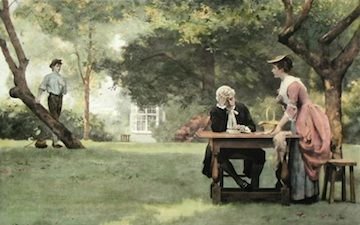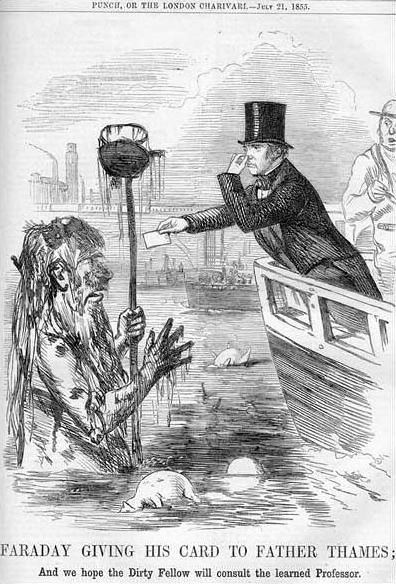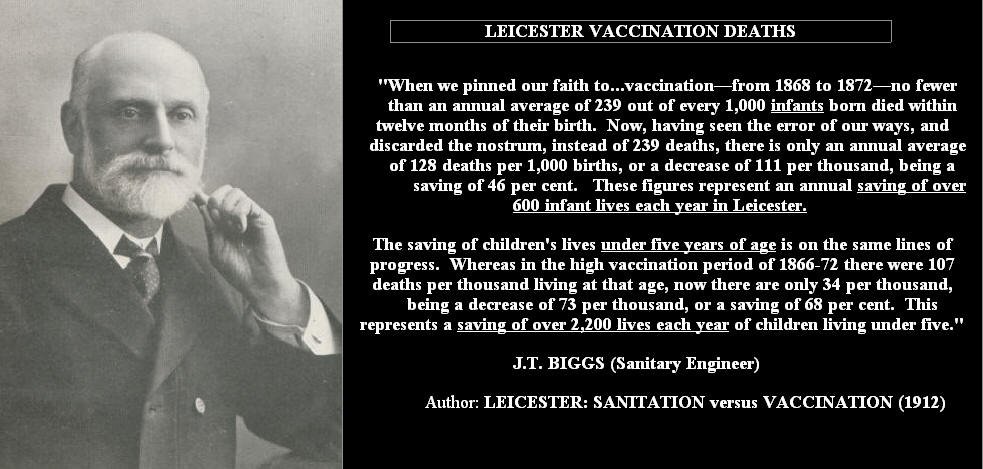Summary

What provoked the need for vaccines during its inception back in the 1850s? When I think of Victorian times I see pretty etched pictures of women in long corseted dresses and men in top hats and coat tails. That is a romantics view of the 1850s. Most people that worked for wages lived hand to mouth. The industrial revolution needed workers for their factories. People were forced from their rural life that couldn’t afford to mechanize their small farm or worked for landlords that no longer needed them. There was not only a revolution regarding factory made goods, farming also went through its own industrial revolution. Those who couldn't afford to mechanize lost their land and their way of life. We are told this also will happen with the revolution regarding the artificial intelligence movement to replace humans in transportation, factories and many jobs we hold in the corporate world.

Factories were built and the poor of mostly rural agricultural England flocked to the newly built factories with little infrastructure to support its workers. We are about to see this happen again with the AI'a take over regarding transportation and other jobs that can be automated.

New factory jobs in the 1850s had no health, safety, or minimum-wage laws. The 1800s was a time when people worked 12 to 16 hours in menial work. Kids ran free on the street as both parents worked. There was no waste disposal infrastructure, cramped row houses, sewer water running through the street, garbage dumps steaming with people, hogs, dogs, and horses walking through the waste.

Poor working conditions, inadequate food and shelter, non existent knowledge of basic hygiene bred diseases and the working population sickened. The diseases spread to the upper class, which were forced to do something for the working poor because their own were dying from the diseases produced by the working poor that brought so much wealth to their bank accounts

"...the cupidity [extreme greed] of landlords had tempted them to build up narrow alleys with small wooden tenements, which, costing but little, and being let to numerous families, yield immense profits. The alley is often not more than six feet wide, paved with round stones and with very insufficient means for draining off the water. It is not uncommon in such situations to find one or two apartments in each house entirely under ground. Can we wonder if in such a state of things we find moral as well as physical disease, vice as well as sickness? Can we expect men who live thus to be sober and orderly, or women to be cleanly and domestic? In such situations, during the summer months, diarrhoea and dysentery are rife, and among children fatal.– New York physician Benjamin McCready (1813–1892), "

”In a room opening from a squalid yard, where a number of listless women were lounging to and fro, trying to get warm in the ineffectual sunshine of the tardy May morning – in the “Itch Ward,” not to compromise the truth – a woman such as HOGARTH has often drawn, was hurriedly getting on her gown before a dusty fire. She was the nurse, or wardswoman, of that insalubrious department – herself a pauper – flabby, raw-boned, untidy…But, on being spoken about the patients whom she had in charge…sobbing most bitterly, wringing her hands…Oh, “the dropped child” was dead! Oh, the child that was found in the street, and she had brought up ever since, had died an hour ago, and see where the little creature lay, beneath this cloth! The dear, the pretty dear!”

For the working poor in the 1850s throughout the Western World you would find a one roomed dwelling shared by parents of six or more children, and various other relatives. They all slept together on rags placed on the floor with no beds or bedding. People were dying by the thousands from diseases caused by deplorable living conditioned packed together in squalid conditions.

By 1885 people started protesting against mandatory vaccines which caused more deaths than promised immunity. People started going to prison and paying fines rather than take vaccines. Eventually great minds came together with a concerned informed population and created the Great Demonstration in Leicester, England. The Leicester method which used isolation of the sick in hospitals, improved hygiene, diet and living conditions stopped smallpox spread. By 1887 the world had spread and systems were installed to improve health and hygiene. Vaccination rates dropped by 10 percent.
What does pure mean regarding vaccines? The Therapeutic Substance Act of 1943 stated that vaccines must not contain more than 20,000 various micro organisms per cubic centimeter. Even with this best standard it is certain all vaccines will be contaminated . Vaccines will contain more than what we are told. Vaccines will also have yeasts, fungi, bacillus subtilis, back, coli, Pseudomones pycyantes and other contaminates. British Medical Journal Nov. 4th 1950.
By the mid 1850s into the early 1900s vaccination was supported by the Western Modern Medical institutions. Despite protest by most of the population and many doctors and scientists. Fines, seizure of personal property and imprisonment were enforced by law.

Who Welds The Power During Epidemics and What That Means To Your Freedom
My next article will go into the history of the power players behind the modern day vaccine industry.


 A link to My Blog
A link to My Blog